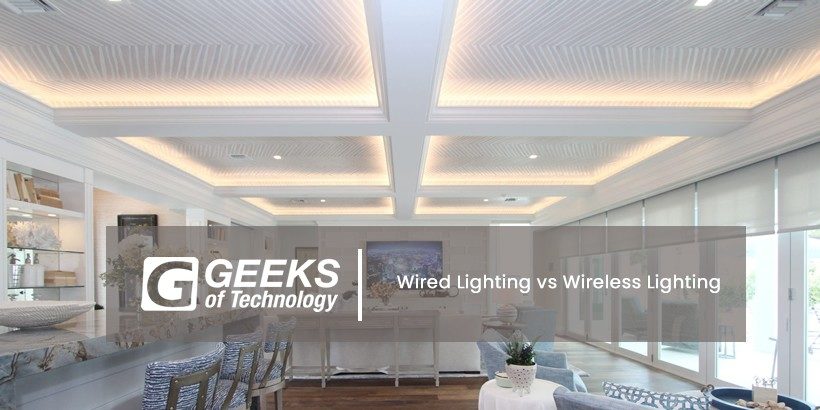Smart lighting systems can become quite overwhelming now in 2021. This is because there are so many terms and so many variations available from at least a thousand manufacturers.
You don’t have to worry though because things are way simpler than you may think. In fact, we are sure that we’re going to take you from the beginning stages up to a point where you’ll feel quite comfortable about this topic.
For starters, you should know that there are only 3 main types of smart lighting systems that you can implement in your home:
- Wired Lighting (also known as Centralized or Integrated Lighting)
- Wireless Lighting (RF powered with little to no wires involved)
- Hybrid Lighting (a combination between the two solutions)
Each of these 3 systems comes with certain benefits and drawbacks that we’re going to discuss in the following lines.
We’ll talk a bit about the performance aspect, the reliability, the convenience factor and the costs involved with each system.
Let’s start with the most common of the three, the “Wired Lighting System”.
1. Wired Lighting
Also known as the “Centralized Lighting System” or the “Integrated Lighting”. It is called centralized because it is powered by wall wiring that leads to a single processor.
The wired system is fully integrated within your smart home thanks to its direct connection to other smart appliances, removing any communication glitches, lag or performance drawbacks usually experienced on wireless controls.
On top of that, the wired lighting can sustain multiple workloads at the same time.
E.g.: You can turn the lights “on” / “off” for a room, a group of rooms in your home or trigger multiple tasks (such as: turning on the HVAC, blinds, fans, speakers, temperature etc.)
Basically, a wired lighting system can offer you customization options for a group of lights or individually for each lightbulb installed in your home.
Pros
- Largest variety of controllers available
- The wiring is hidden within the walls
- Supports multiple workloads simultaneously
- More aesthetically pleasing
- Connected through LAN wires
- Most reliable option
Cons
- You can’t change the keypad position after mounting
- More difficult to install after a home is already
- Requires a strong wiring
- More expensive
2. Wireless Lighting
As the name suggests, this is a wireless lighting solution that’s powered by radiofrequency (RF) waves and the powerful Crestron infiNET EX® technology.
The benefits of such a lighting control system float around the fact that you don’t have to invest as much time and money in the implementation process.
Basically, a wireless lighting system will remove the need for drilling holes in your walls or investing in a new wired infrastructure.
Instead, you’ll benefit from a reliable 2-way RF communication embedded in a beautifully designed control system.
Still, before deciding to go this route, you should know that wireless systems may require additional RF repeaters and heavier additions (such as switch boxes) that are not as aesthetically pleasing.
Pros
- No wiring is required
- Is quicker to install
- A cost-effective solution
Cons
- Heavier design – switches are visible
- Requires RF repeater for large estates
- Less-reliable than a centralized system
3. Hybrid Lighting
The 3rd, lesser-known smart lighting option: the hybrid lighting system. Even though we encourage people to go with hardwired lighting for their home, there are certain times when this is not possible.
At least, it is not possible for the entire home. If you find yourself in such a case, then you should know that you can opt-in for a “Hybrid System”. This can bring the “best of both Worlds”, offering you wireless flexibility combined with wired reliability.
Conclusion
As a rule of thumb, we can say that wired (centralized) solutions tend to outperform wireless ones because they can outstand way more tasks at once. Besides that, they integrate perfectly in the home décor and eliminate the regular maintenance from your calendar.
There’s also one central processor for this type of lighting and everything works as smoothly as possible with no lag involved. Also, you can customize this type of lighting as much as you want.
On the other hand, the wireless lighting system is cheaper than the centralized one and is way easier to install. You don’t need to drill your walls to install it and you certainly don’t need all those wires.
If you believe that one portion of your home could go with centralized lighting while the other goes with wireless, then a hybrid solution is totally possible.
Get in touch with our team of lighting experts today to bring some “LIGHT” in your thoughts and in your home as well!

